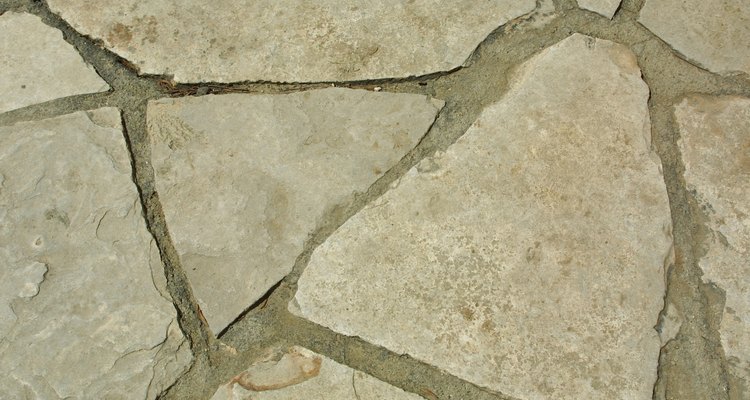
If you want to keep your slate or other type of flagstone walkway in good condition, one of the things you need to do is avoid using rock salt to keep it from getting icy during the cold months. There are a few other things you can use besides rock salt that will keep you safe and not harm your slate walkway.
How Salt Damages Slate
Rock salt damages slate and other types of flagstone by causing it to chip away gradually. The salt causes ice to melt, and the melting and freezing process shrinks and expands the slate, causing cracks in the surface. These cracks become deeper, weaken the slate and cause parts of it to chip away from the surface and away from the edges. Salt also causes discoloration in the form of white patches, or patches that are a few shades lighter than the rest of the stones.
Alternative Deicers
Calcium magnesium acetate (CMA) is used as an alternative to sodium chloride to deice roads, making them safer to travel on in the winter. CMA has some drawbacks, however -- it loses its effectiveness in temperatures below 23 degrees and reacts more slowly than salt, especially during a snow or ice storm. On the upside, CMA lasts longer than salt and doesn't cause the damage that salt causes on road or walkway surfaces.
Traction
Instead of using a deicer, consider sprinkling a fine material over your slate walkway that will give the surface some traction or "grab" in the cold months. Sand is often mixed with things such as CMA to give the icy surfaces more texture so people are less likely to slip on the sidewalks or lose control on the roads. Cat litter is also cheap and sticks to the ground even in icy conditions, so you won't have to worry about falling on your walkway.
How to Apply Deicers or Traction
Mix some coarse builder's sand with a bag of CMA, both of which can be found in home-improvement stores. Scoop up the mixture with a small plastic cup or hand shovel for a small job, or use a large garden shovel to spread the mixture over a longer walkway. Walk along the side of the icy slate walkway and shake the shovel or cup back and forth as you move along to distribute it evenly. The sand provides traction while the CMA goes to work to break up and melt the ice.
Related Articles
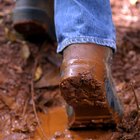
How to Clean Dry Mud From the Soles of ...

How to Color Table Salt

Dangers of Salt Table Lamps
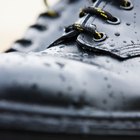
How to Get the White Out of Leather ...

Rocks Used in Gravestones

How to Remove Salt Stains From Boots
How to Make Homemade Ice Cream in a Bag

How to Drink Tequila With Salt & Lemon

How to Tape Down an Aisle Runner for an ...

How to Sanitize Sandbox Sand
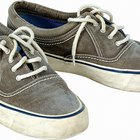
How to Make Sneakers Not Slippery

How to Clean White Bucks
Free Things to Do in Salt Lake City
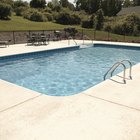
How to Repair a Fiberglass Swimming Pool

How to Restore Black Suede
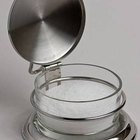
What Is a Salt Cellar?

What Type of Shoes Should Be Worn for ...

Does Salt Ruin Shoes?

How to Get Rid of an Ant Nest in the ...

What Can Be Used to Protect High Heels ...
References
Writer Bio
Angela Neal is a writer for various websites, specializing in published articles ranging from the categories of art and design to beauty and DIY fashion. Neal received her Associate of Arts in administrative assisting from Bohecker College.
Photo Credits
Jupiterimages/Photos.com/Getty Images